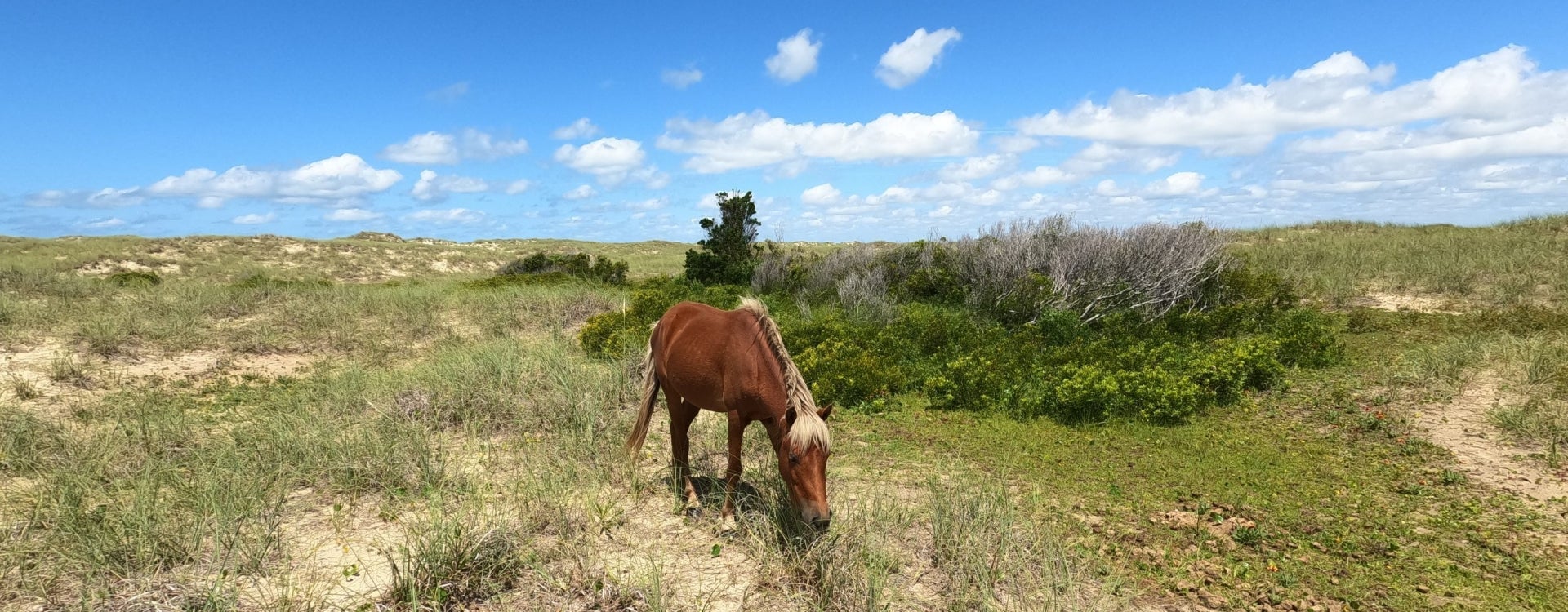Summer Field School 2021: Cape Lookout
The Program in Maritime Studies held its summer 2021 field school at Cape Lookout (Core Banks) and on Shackleford Banks on the North Carolina Outer Banks. The goals of the field school were broad and multi-faceted, but included introducing a suite of non-disturbance terrestrial archaeological methods performed by MA in Maritime Studies graduate students. The work was complemented by non-disturbance marine archaeological methodologies that were planned to occur in adjacent aquatic areas under a permit with the North Carolina Department of Natural and Cultural Resource’s Underwater Archaeology Branch. Specific tasks included:
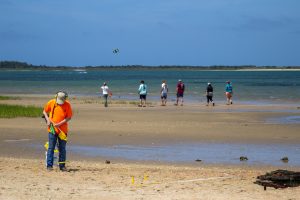
1. Documentation of archaeological sites. Based upon historical research and oral histories, field school participants sought out potential archaeological sites for documentation. These sites included any surface archaeological evidence of settlement or industry on Shackleford Banks, or any potential debris from the site of the shipwreck Seychelle (NC# CLS0003). Documentation methods included photography, videography, and photogrammetry, and tape-based drafting methods.
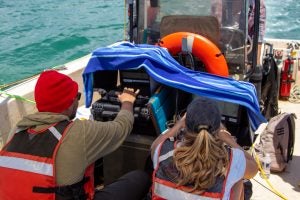 2. Site discovery and delineation via remote sensing. Educational remote sensing operations involved the use of conductivity-logging metal detectors (e.g., Minelab CTX3030) to define site extent in terrestrial and shallow-water/intertidal settings. These tasks were to characterize potential surface and sub-surface archaeological deposits in the area, and would not be ground-truthed (i.e., no sediment would be disturbed). Underwater geophysical survey involved marine magnetometer and side scan sonar surveys in several areas within Lookout Harbor.
2. Site discovery and delineation via remote sensing. Educational remote sensing operations involved the use of conductivity-logging metal detectors (e.g., Minelab CTX3030) to define site extent in terrestrial and shallow-water/intertidal settings. These tasks were to characterize potential surface and sub-surface archaeological deposits in the area, and would not be ground-truthed (i.e., no sediment would be disturbed). Underwater geophysical survey involved marine magnetometer and side scan sonar surveys in several areas within Lookout Harbor.
3. Position fixing exercises. All the above tasks included position fixing with handheld GPS and RTK GNSS systems for the creation of a field school GIS. GPS position fixing exercises occurred on Shackleford Banks, and RTK position fixing occurred on Core Banks in association with the CLS0003/suspected Seychelle remains investigations.
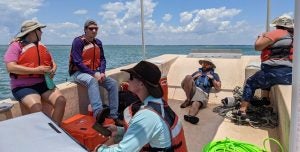
Graduate students enjoy downtime during geophysical survey operations.
The project identified several terrestrial sites of interest related to the lost Diamond City settlement on Shackleford Banks in addition to identifying and documenting the entirety of beach wreckage associated with the possible wreck of Seychelle in Lookout Harbor. In addition to exploring these areas, students participated in 3D recording of several small watercraft at the Core Sound Waterfowl Museum.
This fieldwork was not possible without the support of the National Park Service and the Core Sound Waterfowl Museum.
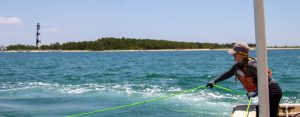
ECU graduate student deploys magnetometer in the harbor below the watchful eye of the Cape Lookout Lighthouse.
